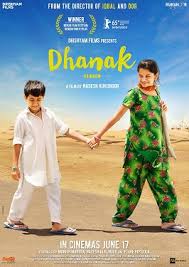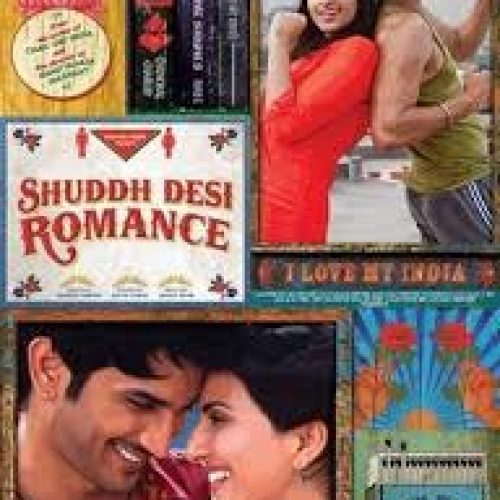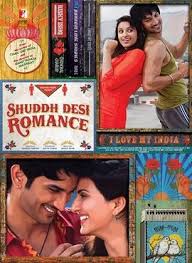Some films have a way of touching your heart with simplicity, and this one does just that. Directed by Nagesh Kukunoor, Dhanak (2016) is a beautiful tale set in the rustic landscapes of Rajasthan, featuring two young talents, Hetal Gada and Krrish Chhabria, in the lead roles. A family drama with a road-trip adventure at its core, the film belongs to the coming-of-age genre, centering on the bond between a brother and sister. Shot against the picturesque and sun-soaked desert backdrop, the movie is a heartwarming story about dreams, hope, and the unbreakable sibling bond, all rolled into one.
The story follows Pari (Hetal Gada), a spirited and determined young girl, and her visually impaired brother Chotu (Krrish Chhabria). Pari believes that if she can get Chotu’s eyesight back, everything will be perfect in their world. Inspired by a poster of Bollywood superstar Shah Rukh Khan promoting eye donation, she sets off on an epic journey across Rajasthan with Chotu to meet the actor and convince him to help. The siblings embark on a long, adventurous trek, meeting a diverse cast of characters along the way, each adding to the magic of their journey. The movie keeps its focus on the children’s innocent belief that anything is possible, without delving too much into the harsh realities they face.
One standout element of Dhanak is the acting. Hetal and Krrish, as Pari and Chotu, deliver captivating performances that elevate the film beyond its simple premise. Hetal’s portrayal of a caring elder sister, burdened with responsibilities beyond her years yet fiercely optimistic, is authentic and heart-rending. Krrish, as the spunky Chotu who refuses to let his blindness define him, brings an endearing blend of mischief and vulnerability to the screen. The chemistry between the two feels genuine, which is crucial for a film so heavily reliant on their dynamic. They carry the narrative effortlessly, making you root for them through every obstacle they face.
The direction by Nagesh Kukunoor is understated yet effective. His storytelling is simple, letting the emotions of the characters take center stage rather than relying on dramatic twists or heightened conflict. The journey across Rajasthan, filled with wide-open spaces and colorful vistas, is captured beautifully, giving the film a natural, earthy aesthetic. The attention to small details, like the contrast between the vast desert and the intimate moments shared by the siblings, shows Kukunoor’s expertise in blending visual storytelling with human emotions. The pacing is gentle, much like the flow of the story, allowing viewers to immerse themselves in the siblings’ world without rushing from one scene to the next.
Cinematography, handled by Chirantan Das, deserves special mention. The film is a visual treat, showcasing Rajasthan’s rugged beauty with long shots of deserts, sand dunes, and quaint villages. The dusty landscape is brought to life with vibrant colors, creating a striking contrast that enhances the fairytale-like journey. The film uses natural lighting to great effect, which adds a layer of authenticity to the story. The cinematography helps viewers feel the scorching heat of the desert, but at the same time, it captures the warmth and hope radiating from the young protagonists. There is an almost magical quality to the way Rajasthan is portrayed, with its wide horizons and ancient forts, making the setting as much a character in the film as the actors themselves.
The music by Tapas Relia plays a crucial role in amplifying the emotional beats of the film. The soundtrack is uplifting, with folksy tunes that feel organic to the film’s rural setting. Songs like “Jeene Se Bhi Zyada” and “Dum-A-Dum” are not just background score; they encapsulate the spirit of Pari and Chotu’s journey and their unwavering hope. The music complements the story’s tone—at times lively and playful, and at other moments reflective and emotional. It never overwhelms the scenes, but instead enhances the mood, making the overall experience more immersive. The score transitions smoothly between moments of joy, tension, and heartache, underscoring the highs and lows of the siblings’ adventure.
The themes of hope, perseverance, and the sibling bond are beautifully woven throughout the narrative. What makes Dhanak particularly special is the way it handles these themes without ever becoming preachy. The film doesn’t dwell on the tragedy of Chotu’s blindness; instead, it focuses on the possibility of a brighter future, seen through Pari’s unwavering belief in miracles. Their bond is the heart of the film, and despite the hardships they face, their sibling rivalry, love, and loyalty are depicted with authenticity and warmth. The underlying message—that faith and love can move mountains—is delivered with subtlety, leaving a lasting impact.
Apart from the technical aspects, the film also stands out in its use of secondary characters. The people Pari and Chotu meet along their journey, from a kind truck driver to an eccentric old man, add depth to the film. Each character represents different facets of human nature, and while some encounters are heartwarming, others are more challenging. The film never loses its sense of innocence, however, maintaining a tone that makes it accessible to both children and adults.
In conclusion, Dhanak is a gem of a film that combines simple storytelling with powerful emotions. It’s a movie that doesn’t rely on big-budget effects or star power but shines through its heart and sincerity. The performances, especially by the two young leads, are stellar, and the direction, music, and cinematography work harmoniously to create a memorable cinematic experience. It’s a feel-good movie that leaves you with a smile and perhaps a tear or two, reminding us that even in a world full of obstacles, there’s always a rainbow after the storm.
If you’re looking for a film that is touching, inspiring, and visually captivating, Dhanak is highly recommended. Its universal themes of love, resilience, and hope make it a must-watch for anyone in search of a story that will uplift their spirits and restore their faith in the power of dreams.







